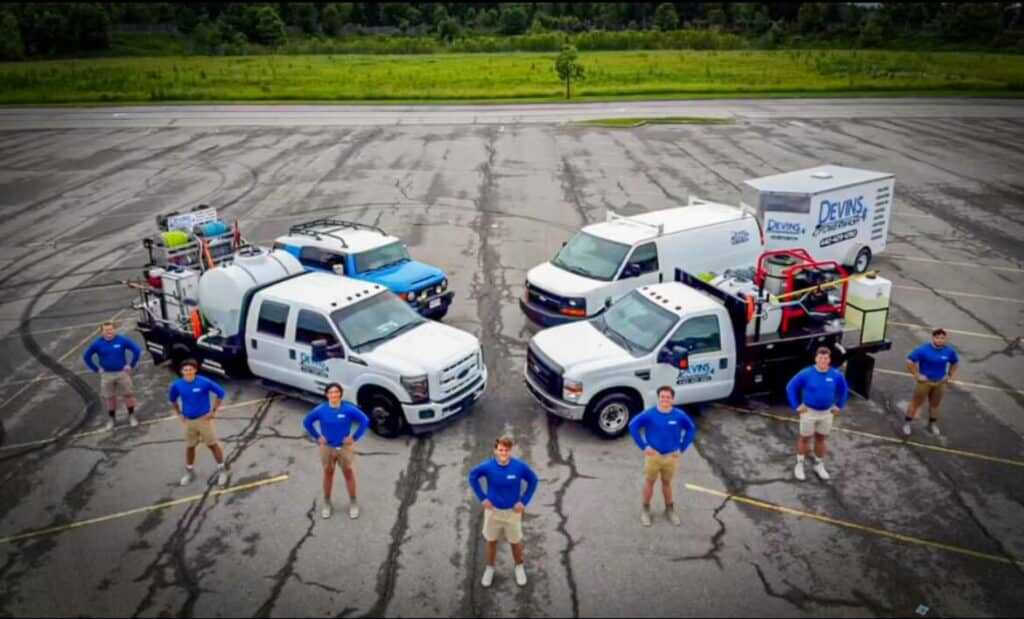Get Quality Euclid Commercial Washing to Maintain Your Building’s Appeal
Get Quality Euclid Commercial Washing to Maintain Your Building’s Appeal
Blog Article
Reliable Techniques for Graffiti Elimination That Bring Back Surface Areas to Their Original State
The obstacle of graffiti removal is complex, requiring an understanding of numerous graffiti types and the most reliable techniques for restoration. From chemical remedies that provide to certain paint make-ups to pressure cleaning techniques that maintain the stability of surface areas, each strategy has its qualities.
Recognizing Graffiti Types
Recognizing the diverse kinds of graffiti is essential for reliable elimination techniques. Graffiti can be extensively classified into a number of types, each calling for various strategies for elimination. The most usual kinds include throw-ups, tags, and murals. Tags are the easiest form, containing an elegant signature or logo design, frequently produced rapidly with spray paint or pens. Their relatively tiny dimension can make them less complicated to remove yet can still present obstacles depending upon the surface area.
Throw-ups are much more complicated and typically entail larger, bubble-like text loaded with a single shade. These pieces can cover a lot more location and might demand various elimination approaches compared to tags. Murals, on the other hand, are detailed artworks that can be thorough and quite large, typically appointed or produced with approval. The elimination of murals offers unique challenges due to the capacity for damage to the underlying surface and the artistic value.
Understanding these distinctions is important for choosing the right techniques and products for effective graffiti elimination. Each kind not only differs in its aesthetic effect but also in the approaches that will certainly be most reliable in bring back surfaces to their original problem.
Chemical Elimination Techniques
When tackling graffiti elimination, chemical approaches are commonly the most effective and reliable method for various surface areas. These methods utilize specialized solutions developed to break down the chemical bonds in graffiti, making it much easier to eliminate without harming the underlying material.

It is essential to select a chemical remover that is compatible with the surface being treated to stop damages. Checking the product on a tiny, low-profile location before prevalent application is a good idea. Additionally, proper protective tools, such as handwear covers and masks, need to be put on to make sure safety throughout the elimination procedure.
When the graffiti has been liquified, it is crucial to thoroughly wash the surface to get rid of any type of chemical residue, which can cause discoloration or destruction in time (Graffiti Removal in Euclid). On the whole, chemical elimination methods use a powerful option for restoring surface areas to their original state while lessening potential damage
Pressure Washing Methods
While chemical removal techniques are very reliable, pressure cleaning offers an alternative method for graffiti elimination that can be just as efficient, particularly on long lasting surface areas. This technique utilizes high-pressure water jets to dislodge and remove graffiti from different products, such as concrete, brick, and steel.
The performance of stress cleaning rest on numerous variables, consisting of the stress setup, nozzle type, and the distance where the water is used. Normally, a stress variety of 2,000 to 3,000 PSI is advised for many surface areas, however adjustments may be necessary relying on the substratum's level of sensitivity. Utilizing a follower spray nozzle can aid cover bigger locations properly while decreasing the risk of damaging the underlying material.
Prior to pressure washing, it is important to examine the graffiti's make-up. Water-based paints commonly react much better to this approach than irreversible or oil-based pens. Pre-soaking the area with water can enhance the removal procedure by minimizing view website paint bond. After the stress washing is complete, surface areas ought to be examined for any type look here of remaining deposit, and a second pass may be required to attain ideal results. On the whole, pressure cleaning is an effective tool in the graffiti elimination collection.

Eco-Friendly Solutions
Several people and companies are progressively seeking eco-friendly solutions for graffiti elimination, identifying the importance of minimizing ecological influence. Standard graffiti elimination methods often entail extreme chemicals that can be dangerous to both the setting and public wellness. In contrast, eco-friendly solutions make use of safe and eco-friendly materials that properly remove graffiti without triggering damage to surface areas or releasing unsafe materials into the atmosphere.
One efficient technique is making use of all-natural solvents, such as citrus-based cleaners, which harness the power of plant-derived components to break down paint without leaving poisonous residues. Additionally, baking soft drink and vinegar blends can act as mild abrasives that lift graffiti while being secure for the atmosphere.
An additional innovative approach is utilizing environmentally friendly stress washing systems that use less water and energy contrasted to conventional approaches. These systems frequently include specialized nozzles and eco-conscious detergents that improve efficacy while minimizing waste.
Preventative Actions
Preventative steps play a crucial function in combating graffiti criminal damage and minimizing its incident. By applying critical approaches, homeowner and neighborhoods can hinder possible transgressors and reduce the expenses connected with graffiti removal.
One effective method is making use of anti-graffiti layers, which create a protective layer on surfaces, making it tough for paint to adhere. These coverings can be clear or colored, permitting the original visual to continue to be undamaged while providing a safeguard against criminal damage. In addition, the installment of security cameras in high-risk areas can serve as a deterrent, as the existence of checking modern technology may prevent prospective wrongdoers.
Neighborhood interaction is additionally crucial; arranging community watch programs or graffiti clean-up events fosters a feeling of possession and pride among locals. Educational efforts in institutions can increase understanding about the negative impacts of graffiti, promoting regard for public and exclusive building.
Conclusion
In conclusion, the efficient removal of graffiti requires a multifaceted technique that considers the kind of graffiti and the surface material. A comprehensive understanding of these techniques is important for attaining optimal results in graffiti elimination endeavors.

Report this page